
This is a collection of materials to help to study macroeconomics
- Subject:
- Economics
- Material Type:
- Lecture Notes
- Author:
- Liubov Zharova
- Date Added:
- 02/12/2021

This is a collection of materials to help to study macroeconomics

Lecture Objective: Introduce students to the super simple Solow model. By the end of the lesson, students should be able to identify inputs to growth, solve for the steady state, and identify the factors that lead to conditional convergence.
The lesson incorporates a number of MRU’s videos about the Solow model and conditional convergence from our Principles of Macroeconomics video course. We also mix in discussion prompts, exercises, practice questions, graphs and charts, and pre- and post-class assignments. Finally, we provide supplementary resources such as additional data sources, relevant articles and blog posts, an episode of Planet Money, and even an interview with Robert Solow himself.
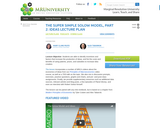
Lecture Objective: Students are able to identify incentives and factors that increase the production of ideas, and list the costs and benefits of using patents, prizes, and subsidies to increase idea creation.
The lesson incorporates a number of MRU’s videos about the economics of ideas from our Principles of Macroeconomics video course, as well as a TED-talk on the topic. We also mix in discussion prompts, exercises, practice questions, graphs and charts, and pre- and post-class assignments. Finally, we provide supplementary resources such as additional data sources, relevant articles and blog posts, a few episodes of Planet Money, and even an interview with Robert Solow himself.
------------------------------------
What is Marginal Revolution University (MRU)?
Many of us can remember our first great economics teacher who fundamentally changed how we see the world. At MRU, we try and deliver that experience to millions worldwide through video.
Founded as a nonprofit in 2012 by George Mason University economics professors Tyler Cowen and Alex Tabarrok, MRU is building the world’s largest online library of free economics education videos -- currently weighing in at more than 800 videos.
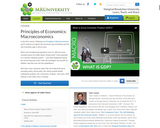
With this free video resource, students will explore the economic way of thinking, and the role incentives play in all our lives through engaging Hollywood production style videos.
Educators can use MRU's videos in a variety of ways, to include “flipping” the classroom, as study aids, supplementary material, concept reinforcement, or even as a full course offering.
In MRU's Principles of Macroeconomics course, we’ll cover fundamental questions such as: Why do some countries grow rich while others remain poor? How important is a country’s banking system — and what happened during the recent financial crisis? How did Zimbabwe end up with an inflation rate that rose into the quadrillions?
We’ll also cover important topics like the Federal Reserve, monetary policy, fiscal policy, the Solow Growth Model, institutional analysis, the “economics of ideas,” and more.
------------------------------------
What is Marginal Revolution University (MRU)?
Many of us can remember our first great economics teacher who fundamentally changed how we see the world. At MRU, we try and deliver that experience to millions worldwide through video.
Founded as a nonprofit in 2012 by George Mason University economics professors Tyler Cowen and Alex Tabarrok, MRU is building the world’s largest online library of free economics education videos -- currently weighing in at more than 800 videos.
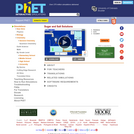
What happens when sugar and salt are added to water? Pour in sugar, shake in salt, and evaporate water to see the effects on concentration and conductivity. Zoom in to see how different sugar and salt compounds dissolve. Zoom in again to explore the role of water.
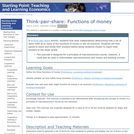
This cooperative learning activity helps students gain a deeper understanding of the three functions of money and provides practice applying those ideas to real-life items.
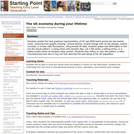
Students predict the best graphical representation of US real GDP/capita during the last twenty years, choosing from graphs showing: cyclical decline, cyclical change with no net change, cyclical increase, or erratic wide fluctuations. Using actual US data, students graph real GDP/capita to find out the actual pattern: a rising series with periodic dips, not a flat series, a falling series, or a highly erratic series as students often predict. Students then reflect on why this pattern is often misunderstood and why it may not fully describe the well-being of the US population.
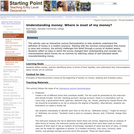
This activity uses an Interactive Lecture Demonstration to help students understand the definition of money in a modern economy. Starting with the common misconception that money is coins and currency, the activity challenges this belief through a survey of student assets. Students reflect on ways in which the survey changed their understanding and consider why misconceptions about money are so common by watching videos of well-educated adults misunderstanding money.
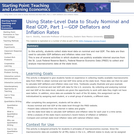
Calculation of state-level GDP deflators and inflation rates "Using FRED" section.

After predicting what the unemployment rate will be for students in the class, a confidential survey modeled on the Current Population Survey questions is used to gather data about each student's employment. Students use this data to measure the class unemployment rate and then assess its accuracy.